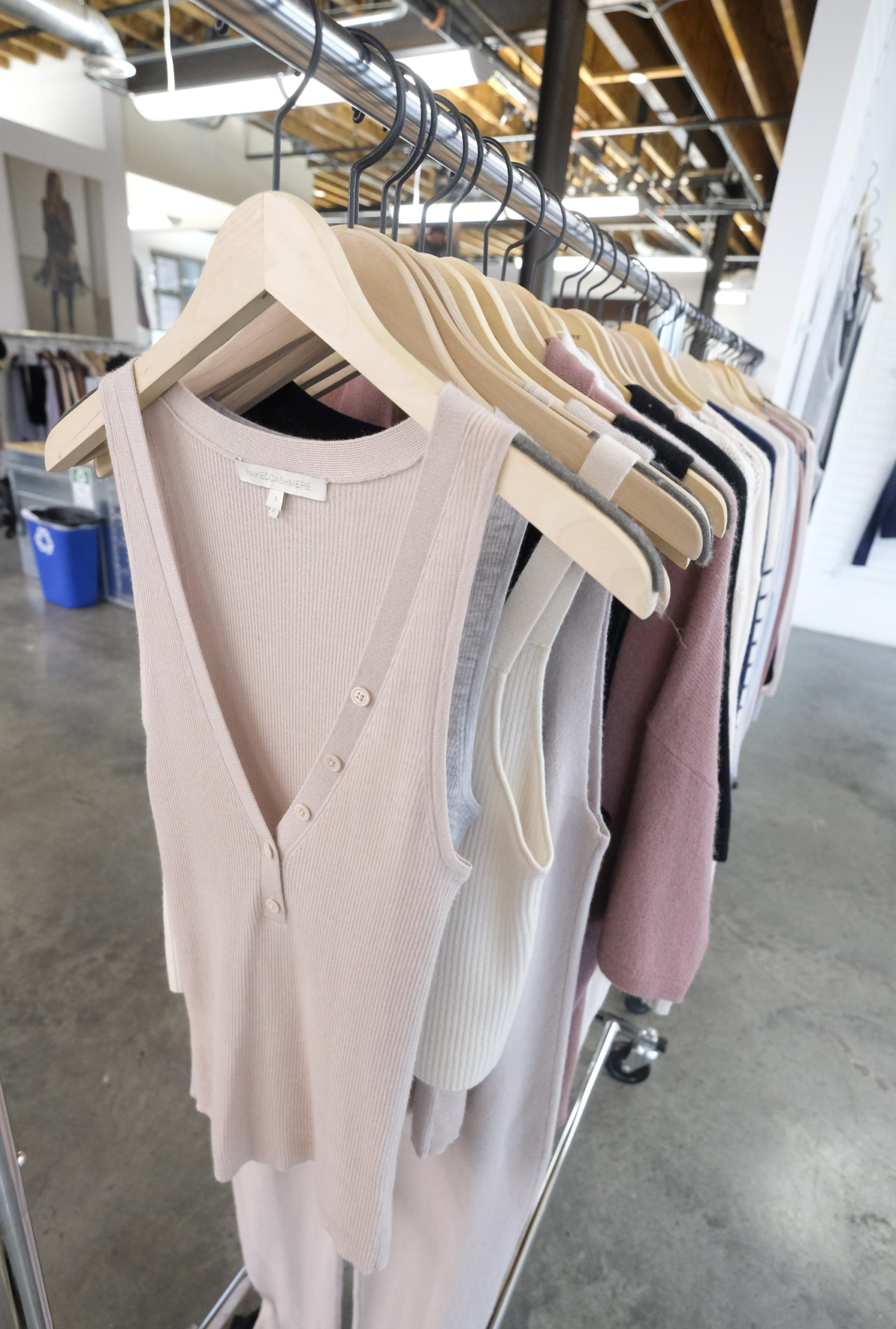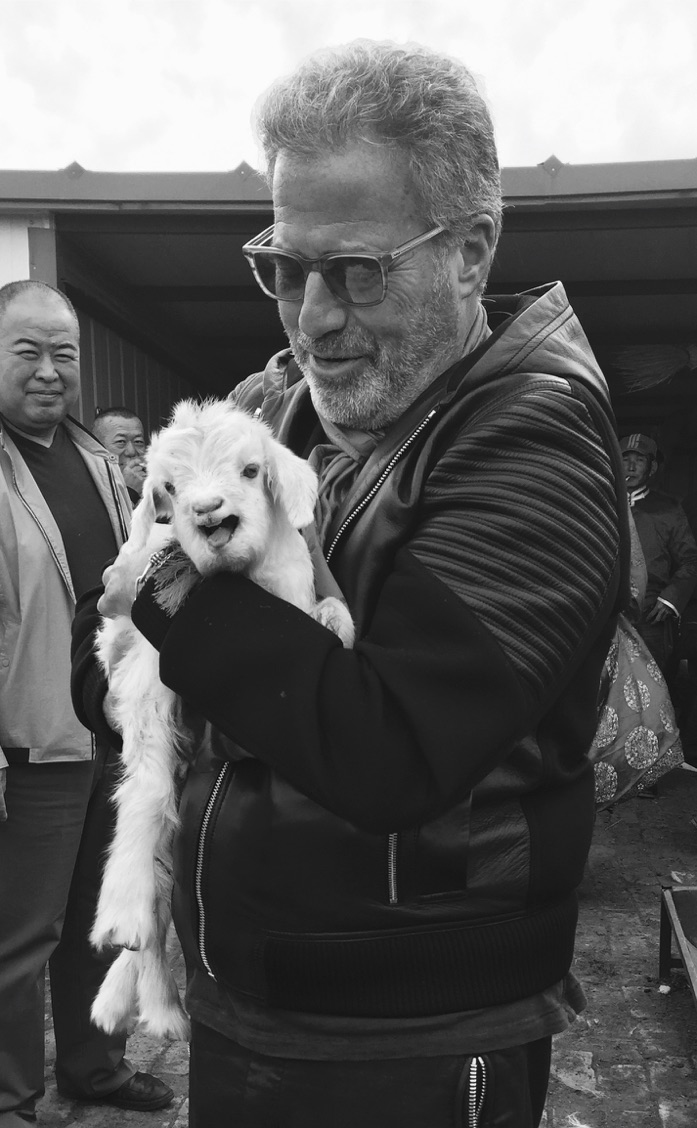The word “recycled” conjures up images of plastic water bottles, soda cans or used printer paper obediently placed in appropriate bins by green-minded consumers.
It’s harder to imagine such a practical word applying to a luxury item like cashmere apparel. Yet, that’s exactly what’s happening at Santa Monica-based 360Sweater, with its newest brand, Cashmere Reborn.
The company was founded in 2009 and is now comprised of two retail brands, 360Cashmere and Skull Cashmere, as well as its direct-to-consumer knitwear brand, Naked Cashmere, which launched in 2016.
The new Cashmere Reborn line is also direct-to-consumer and launched earlier this spring. It includes women’s sweaters, hoodies, tops, shorts and pants made from 100% recycled cashmere.
The word “recycled” also suggests a substance crushed, chopped, blended, melted or reformed into a new object — or in the case of clothing, a vintage or resale item. Cashmere Reborn, however, uses cashmere from never-worn clothing items that did not pass final review or fitting and were never shipped to retail stores. The products are taken apart and unknitted by hand before being re-made into new yarn.
“Either the color or the fit or something else was wrong. Maybe the goods are fine, but (they arrived) a month later than promised,” said 360Sweater President Bruce Gifford, who founded the company with wife, Leslie Gifford, who serves as creative director. “We are giving sweaters a second life. They are getting reborn.”
The Giffords said they prefer the painstaking process of unknitting the cashmere fabric because it maintains more long fibers.
“With cashmere, the longer the length of the fiber, the better the cashmere is,” said Leslie Gifford. “You get better results when you sort it through instead of chopping it up. It’s a big difference.”
The Giffords added that longer fibers create a knitted fabric that is less likely to pill or wear out as quickly.

360Sweater is not the first company to recycle cashmere into cashmere or cashmere-blend fabrics. The Giffords said they are happy that their Cashmere Reborn brand follows in the footsteps of green-minded, Ventura-based Patagonia Inc., known more for activity and sport clothing than luxury fashion.
Patagonia began selling men’s and women’s crew neck sweaters, hoodies, cardigans and beanies made of 95% recycled cashmere and 5% wool in 2017. The Patagonia fabric is made of preconsumer cashmere waste that is mechanically broken down and spun into new yarn.
Said Sarah Hayes, who oversees material development for Patagonia, via email, “We love cashmere for its fiber properties and good thermoregulation; (it is) very soft and comfortable next to skin. Being able to use recycled cashmere from post-industrial and post-consumer inputs allows us the benefits of the fiber but with a much lower environmental impact.”
A sustainable fashion company based in Vernon, Reformation Inc., began offering its Conscious Cashmere Collection, constructed with 70% recycled cashmere, 25% new cashmere, and 5% “responsible” wool yarn, in 2018.
In all of these cases, the main environmental benefit is not in processing the recycled fabric, which requires rewashing of the yarn. Rather, recycling reduces the toll on the cashmere goats, whose soft undercoat is used to create cashmere yarn, as well as the goats’ delicate environment, the grasslands of Inner and Outer Mongolia.
“While everyone loves the feel of cashmere, the global demand for the fiber has led to extreme environmental consequences,”
Kathleen Talbot, Reformation’s chief sustainability officer and vice president of operations, said in an email. “Believe it or not, it takes a full year and four goats to produce enough yarn for one sweater, so the demand has led to a surplus of goats overgrazing in Mongolia and turning their grasslands into deserts.”
360Sweater has partnerships with Mongolian goat farmers, and the Giffords stress that no animals are harmed in the process of acquiring the cashmere wool.

In April and May of each year, the goats are shaved and the wool brushed to remove the rough outer layer of guard hairs from the softer wool beneath.
The wool is then washed and sent to spinning facilities in various locations to be made into yarn, then into fabric. Bruce Gifford said the fabric is fashioned into sweaters and other clothing items in factories near Shanghai.
He added that cashmere yarn is worth $50-$60 a pound, whether it’s recycled or new. Cashmere Reborn items can be purchased for the same price as similar items in the company’s other product lines.
Bruce Gifford said 360Sweater has an average annual revenue of between $40 million and $50 million, and ships about 300,000 units a year.
He said recycled cashmere now represents only 5% of its direct-to-consumer knitwear lines. Though the percentage is small, “right now, we feel good about it,” Gifford said.
“We are always looking in the long term. (The idea is) to go a little bit slowly.
“It’s a sustainable approach (but) sustainability is multifaceted,” he added. “As a company, you have to have a dozen touchpoints where you can be sustainable.”
Keep reading the 2020 Environmental Business Special Report.

